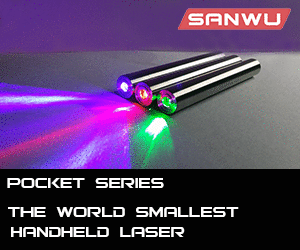So now why are people doubting someone who claims to have these? I mean they're bound to be getting mass produced sometime soon just like the crapio blues were and the 405s before them. It's not like they're some ultra uber unique DPSS WL that can't be made into a diode. Oh and I was referring to a actual extracted diode and not a custom lab unit that costs $$$.
Here's why I am doubting these claims:
(1) 445s were available for individual purchase before we started finding them in projectors, and they were almost $500 a piece. If 515s were to be available for individual purchase, I don't see them costing any less than this figure, and probably a good deal more. Here's why:
(a) Nichia doesn't want these diodes sold individually. They have restrictions placed on the partners that they ARE selling them to, that prevent individual diode sales
(b) There is fierce competition from at least 2 other companies that are trying to get green diodes to market. I don't think Nichia wants individual green diodes to be any easier to procure, at least for now, than they are already through purchase of entire (expensive) labbies from their partners.
(c) The exotic Nichia wavelengths, like 488 and 473, when they are available individually, are insanely expensive - $4k plus
(2) So if they're going to be in the $250 range, we're counting on harvesting them from something mass produced (by a company that can bankroll bulk diode purchases). I am doubtful that a harvestable source of these diodes exists yet:
(a) I pay pretty close attention to press releases with keywords that would have caught any newly announced product containing a green diode (I think).
(b) Microvision extended their target for next gen pico projectors that use the green diodes to summer of 2012.
(c) The current crop of ~50mW 515nm diodes may not actually be pico-projector ready. The Pico1 balances a 50mW 532 with appropriate levels of blue and red, to get a 20 lumen output. 50mW of 515nm is less visible. They're certainly not going to move backwards on the lumen output mark just to get the advantage of using a smaller diode vs dpss. If anything, the new laser-based picos need to get their brightness UP, not down, because they're lagging behind LED-based pico alternatives.
However, I would acknowledge a few wildcards:
1) This OP said 510nm. He never said 515nm, I did. If these really are 510nm, then maybe they're not the current Nichias. Maybe Soraa, Opnext, Osram, etc have a working 510nm that my logic above wouldn't apply to. Maybe one of these companies is cool with selling diodes individually. Opnext certainly has a good track record of making their novel new diodes available at sub $500 pricing.
2) Apple. There's something in the works with Apple and pico projectors. As of 2 days ago, we've got an actual USPTO filing to confirm it (linked below). Apple likes thin and sexy, and laser-based picos are thinner than led-based ones. You know that the minute Apple integrates a pico projector into their iOS systems, we'll be a flood with harvestable items. With Apple, it's quite possible to hear almost nothing, until a few days before the product hits. Of course, they'd still be using diodes from someone else (like Nichia, etc).
United States Patent Application: 0110197147



